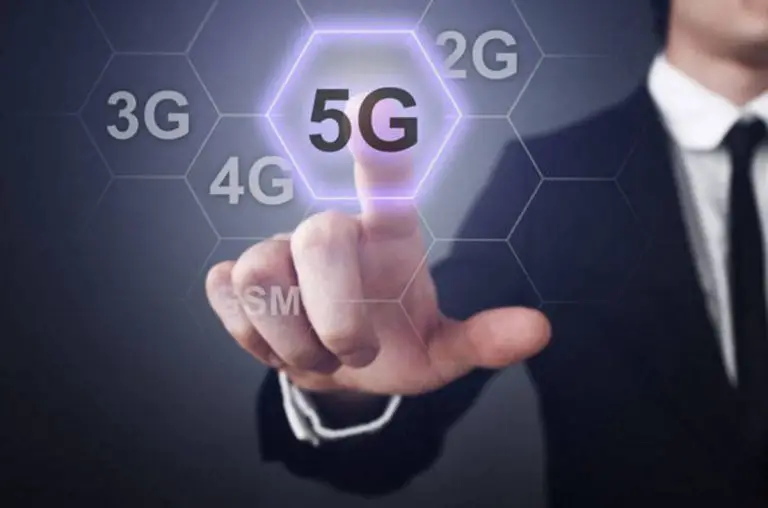Who doesn’t want speedy internet? so it is not any astonishing thing that every foremost telecom in the world is working on internet to make it even faster. Smartphones, cars, homes, and watches are increasingly needing stable internet connections. In order to pipe in enough bandwidth for that valuable wireless feed, we are now in need to have an entirely new form of wireless signal—that’s where 5G comes in.
Just like 4G and 3G before it, 5G is a wireless connection built particularly to keep up with the propagation of devices that require a mobile internet connection. It is not merely your phone and your computer system anymore, either. Home appliances, dog dollar, security cameras, door locks, cars, wearables, and so many other passive devices are going to connect to the web. Gartner forecasts that 20.8 billion devices will be able to get connected to the Internet by 2020. By comparing it, we can say that there are currently an assessed 6.4 billion connected devices in the world. That is a lot more devices asking for a quick connection.
Also Read: She Safe App Developer Site Matrix Intech Is No More Accessible
In order to make 5G and the future of wireless internet a bit easier understand, we debated to break down actually what it is and how it will bring betterment in your life in the very near future.
We are Talking about 5G. But what exactly 5G is?
The “G” in 5G is an abbreviated form of “generation.” Technically wireless phone technology begun with 1G, and in the early 1990s, and it extended to 2G when organization first started allowing people to send text messages between two cellular devices.
Ultimately the world mobilized on to 3G, which gave people the ability to make phone calls, send text messages, and browse the internet. 4G boosted many of the capabilities that were made conceivable with the third generation of wireless. Users can send text messages, browse the web, and make phone calls—and they can even upload and download huge video files without any problem.
Then organizations added LTE, stands for “long term evolution,” to 4G connectivity. LTE then became the fastest and most conformed form of 4G compared to competing phenomenal technologies like WiMax. The difference between WiMax and LTE can be mentioned as between Blu-Ray and HD DVDs: Both of the technologies gained similar outcomes, but it was essential to create a standard for everyone to use. LTE did just that, and it made 4G technology even faster.
Also Read: World’s Fatest Super Computer On Its Way By Japan!
5G will build on the base formed by 4G LTE. It is going to enable people send texts, make calls, send texts and browse the web as always—and it will dramatically increase the speed at which data is transferred across the network. 5G will make it easier for people to download and upload Ultra HD and 3D video. It will also make room for the thousands of internet-connected devices entering our everyday world. Just imagine upgrading your data connection from a garden hose to a fire hose. The difference will be noticeable.
Is it true that 5G is really faster than 4G?
Ultimately, Yes! Speeds will be expressively faster. Currently, 4G LTE transference of speeds top out at about one gigabit per second, which means it takes around an hour to download a short HD movie in perfect conditions. The issue is, people rarely experience 4G’s maximum download speed due to the signals that can be disrupted by so many other things: microwaves, buildings, other wifi signals. The list goes on and on.
5G will intensify download speeds up to 10 gigabits per second. That means it will also reduce latency expressively (giving people faster load times). In short, it will provide wireless broadband the capacity it requires to power thousands of connected devices that will range our homes and workplaces.
How does 5G works?
By using the ultra-high broadcast frequencies, 5G connectivity will deliver the data transfer speeds that are up to 200 times faster than current 4G networks.
There are already massive consortium of main global telecom working to make worldwide standards around 5G. Although most of those standards haven’t been solidified, specialists expect it to be backwards companionable (with 4G and 3G) in addition to having some invulnerability across the world.
In their most elementary form, cell phones are basically two-way radios. When you make a call to someone, your phone translates your voice into an electrical signal. It transmits that electrical signal to the nearest cell tower using radio wave. The cell tower throw backs the radio wave through a network of cell towers and ultimately to your receiver’s phone. The similar thing is functioning when you send other forms of data (like photos and video) across the network.
Stereo-typically, when a new mobile wireless technology arises along (like 5G), it is assigned a higher radio frequency. For instance, 4G engaged the frequency bands up to 20 MHz. In the scenario of 5G, it will probably sit on the frequency band up to 6GHz. The purpose i.e. new wireless technologies occupy higher frequencies is because they typically aren’t in use and move information at a much faster speed. The issue is that higher frequency signals don’t travel as far as lower frequencies, so multiple input and output antennas (MIMOs) will possibly be used to enhance signals anywhere 5G is offered.
Also Read: 7 Phenomenol Inventions Of Technology In Past 10 Years That Has Transformed The World
5G and Samsung Electronics
From 1G networks to the current 4G the evolution of telecommunications technology has entirely transformed how people share and use information. Now, Samsung Electronics brings to the market a whole new pattern of connectivity through 5G.
Samsung electronics announced that utilizing the ultra-high broadcast frequencies, 5G connectivity will provide the data transfer speeds that are up to 200 Times faster than current 4G networks, even in highly dense locations.
“By utilizing ultra-high broadcast frequencies, 5G will deliver data transfer speeds that are up to 200 times faster than current 4G networks, even in highly dense locations.” Said by Samsung in a newsroom.
This ultimately will support Samsung electronics to generate more dynamic user experiences across a more various range of technologies and devices, including those which have not yet been purchased wireless connectivity.
“For a start, 5G will make it possible for users to enjoy rich 4K video and more immersive virtual and augmented reality experiences. Imagine being able to take in a front-row concert experience from the comfort of your living room, spark your child’s curiosity with immersive augmented reality edutainment, or simply conference with colleagues through crystal clear video. 5G technology makes it possible to seamlessly facilitate such data-heavy tasks while also opening the door for greater automation in more aspects of daily life, allowing us to streamline everything from the Internet of Things (IoT) and self-driving cars to robotics.” explained the Samsung.
Samsung announced that they already started developing 5G related technologies in 2011 by looking at the expertise grown from past 30 years of experience in the telecommunication area. Samsung Alleged, “By steering in the 5G era, foremost research to advance its commercialization and discover its applications in communications and IoT, Samsung is serving to create the world where fancy can become a reality.”
Also Read: Mood Assessing Smart Glasses By Dior’s Frame-Maker
Availability of 5G
5G is already available in some test places around the United States. This week at Mobile World Congress, Verizon claimed that it has started limited trials of 5G in Texas, Oregon, and New Jersey. Not to be left out, AT&T declared that it will start testing 5G technology in its own labs before hosting fixed trials.
Although both Verizon and AT&T, the nation’s two biggest ISPs, are already taking trials of 5G, don’t assume to see it anytime soon. Most experts predict that 5G won’t be widely available until 2020.
But it will be well worth the wait. If there’s anything that everyone can agree on, it’s that speedy internet is a necessity in this day and age. And the reputation of a quick connection is only going to increase. If we start to realize a vision of the future with trillions of connected devices, then mighty fast internet is going to become a basic need—and 5G will support us to get there.
To Read More: Zong To Offer 4G Connectivity On Daewoo Buses And Cabs Across Pakistan




Your article helped me a lot, is there any more related content? Thanks!